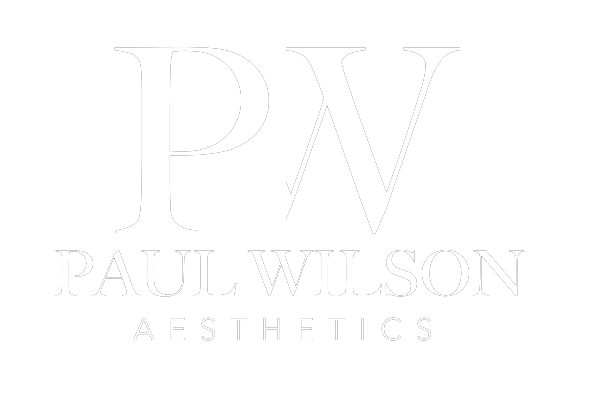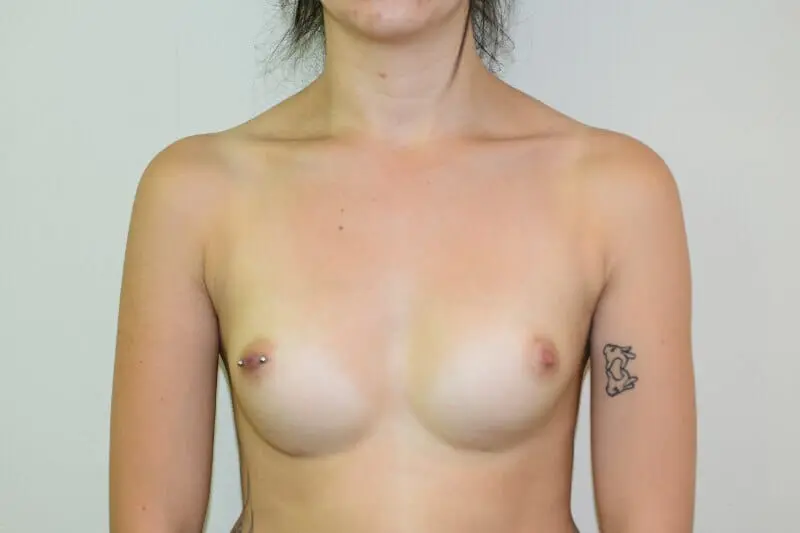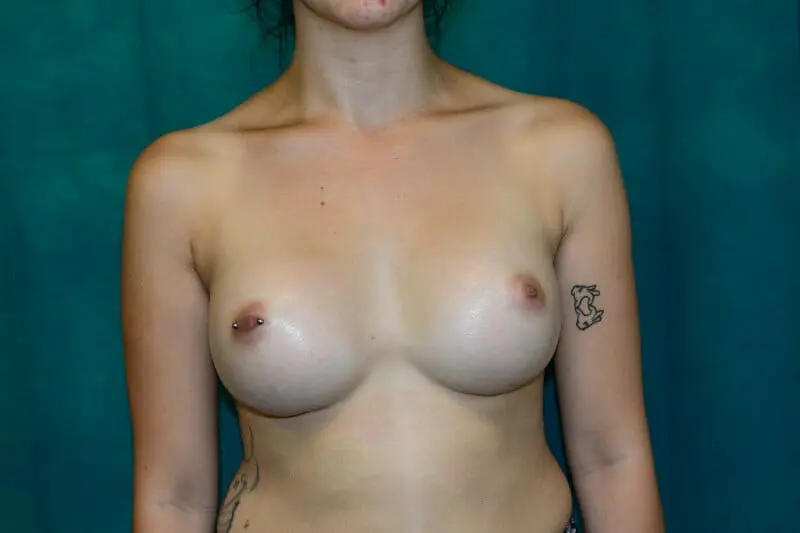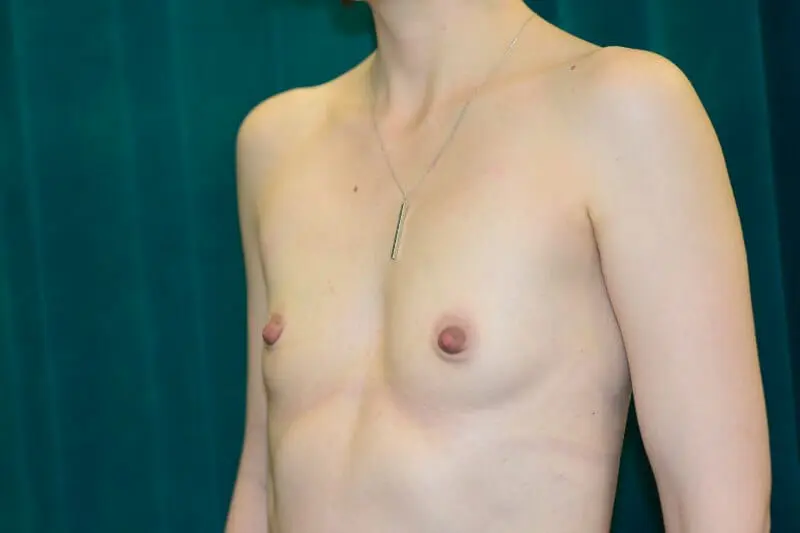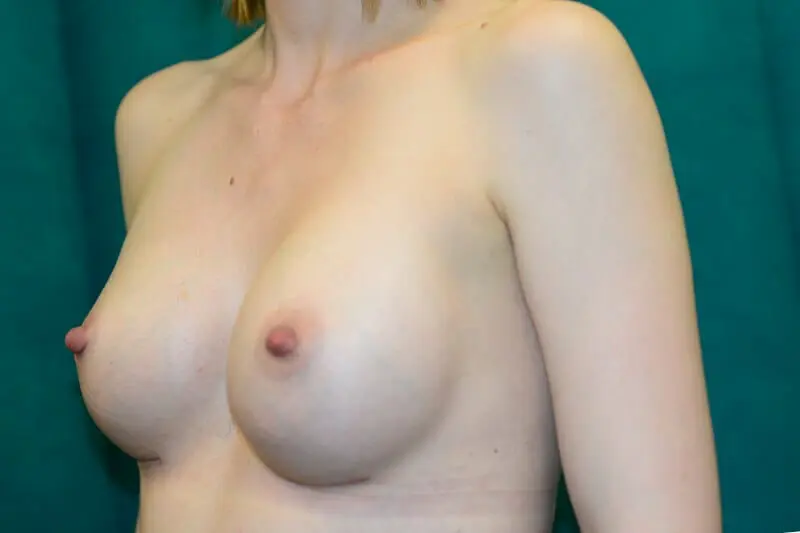Breast enlargement at Wood private clinic in Devon
Breast enlargement, also known as breast augmentation or mammoplasty, uses silicone or saline implants to enlarge, or improve the shape of, the breasts.
Many women consider breast enlargement surgery. There are a number of different reasons for this; often women have breasts that never fully develop or have developed unevenly, some women have always felt their breasts were too small, while other women experience changes in their breasts’ size and shape during pregnancy, weight loss and age.
Typical breast enlargement patients
Whatever your reasons for considering breast enlargement, it is important to remember that the decision is yours alone. You should never consider having the surgery to please someone else. You should also remember that, like all aesthetic surgery, breast enlargement can only change your figure, not your life.
You could be a candidate for breast enlargement surgery if you experience any of the following:
- You are unhappy with the size or shape of your breasts.
- Clothes don’t fit well around your breasts.
Your breasts are different sizes. - Your breasts have changed in size or firmness due to breastfeeding or weight loss.
Choices of breast
implants
Breast implants are available in many different shapes and sizes. There are also different locations within the breast where implants can be placed.
Patients can also choose how firm they would like their breast implants. This can be adjusted by changing the level of fill inside the implant.
During your consultation Paul will discuss with you what you hope to achieve. He will talk you through all the options available so you can feel completely comfortable in making a decision.
VECTRA 3D Imaging
As part of your consultation, you will also have photographs taken in 3D, which will be morphed in front of you to give you an idea of what you could possibly look like with different shapes and sizes of implants. Please insert a VECTRA image and link to the VECTRA page
Book consultation
Paul is an established Consultant Plastic Surgeon, at the Wood private clinic in Devon. This gives patients the opportunity to receive gold standard treatment at a first-class location within beautiful grounds at the country medispa, Wood.
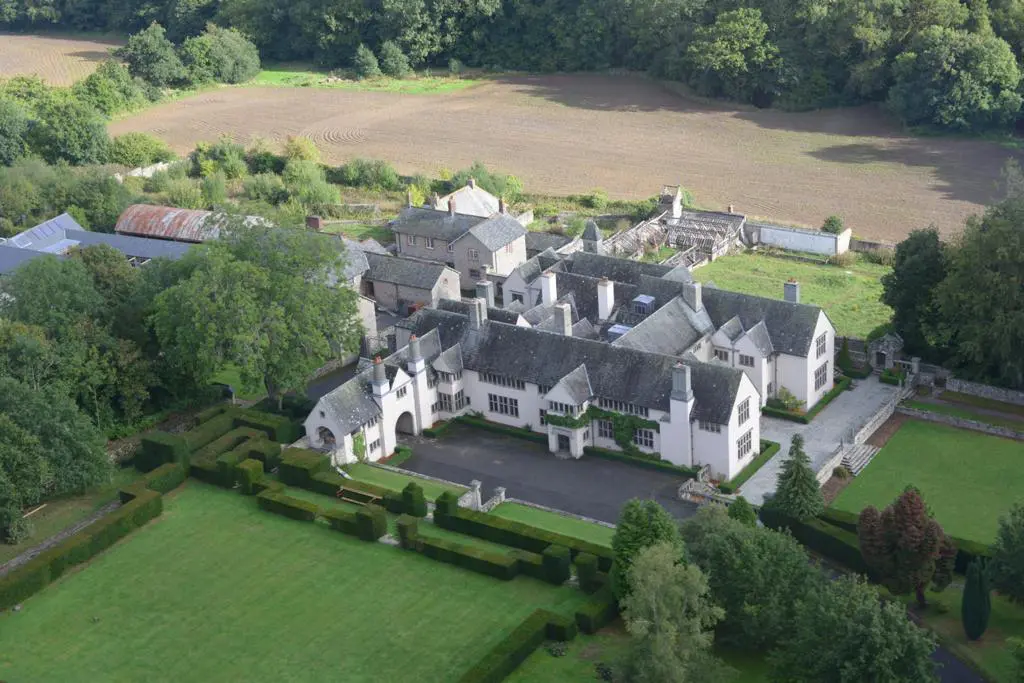
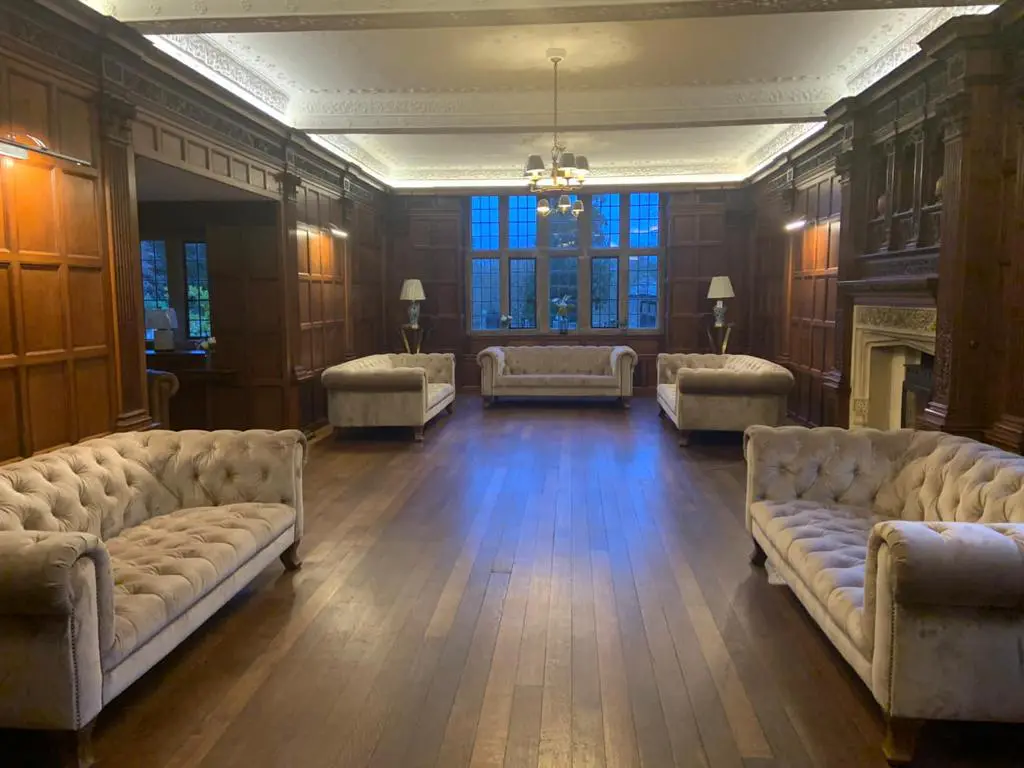

About the Treatment

THE RESULTS
Frequently Asked Questions
Breast implants are available in many different shapes and sizes. There are also different locations within the breast where implants can be placed.
Patients can also choose how firm they would like their breast implants. This can be adjusted by changing the level of fill inside the implant.
During your consultation Paul will discuss with you what you hope to achieve. He will talk you through all the options available so you can feel completely comfortable in making a decision.
Every patient will have undergone a full consultation with Paul so that patients are made fully aware and comfortable before entering into any surgery.
The hospital where your operation is taking place will provide patients with full detailed written instructions on preparing for surgery.
Breast uplift and reshaping procedures are performed under general anaesthesia meaning patients are not prohibited to eat or drink 6 hours prior to the operation.
There are many different reasons why women may choose to undergo breast enlargement surgery. Often these personal reasons stem from a lack of confidence around their own body image, most of whom perceive their breasts to be under developed.
Women may also seek out breast enlargement surgery if they feel their breasts are different sizes or their breasts have changed after pregnancy or breast feeding. Ageing and weight loss can also cause changes in a woman’s breast volume and shape leading to image anxieties. Others may feel happy with their breasts but just want them to be made fuller.
Breast implants are the most popular way of improving breast size and shape. Breast implants help to give a more proportional shape to the rest of the body and can greatly improve self-esteem.
You could be a candidate for breast enlargement surgery if you experience any of the following feelings or conditions:
- You are unhappy with the size of your breasts and are troubled by the feeling that your breasts are too small.
- Your breasts are different sizes.
- Clothes don’t fit well around your breasts and hips.
- Your breasts have changed in size or firmness due to breast feeding or weight loss.
- You feel self-conscious wearing a swimming costume, bikini or fitted top.
Breast augmentation is designed to enlarge the breast and enhance the shape of the breast. It involves the insertion of an implant either directly under the breast or under the muscle beneath the breast. There are a wide variety of implant shapes and sizes which Paul Wilson will be able to guide you towards. It is important that you find a particular implant style that meets your personal goals.
When you’ve made the decision to undergo breast enlargement surgery the last thing you want to do is have to wait, particularly if your body image is causing you considerable discomfort.
There are a number of finance options available for cosmetic surgery. If you choose to have your surgery at Spire Bristol Hospital you may be viable for a 0% loan from First Medical Loans. Spire Healthcare and First Medical Loans offer a 0% APR loan to approved customers of cosmetic surgery.
For more information call First Medical Loans on 0845 618 5375 or visit their website.
How ‘real’ breast implants feel depends on which type of breast implant you choose to have inserted. Most Plastic Surgeons agree that silicone gel breast implants feel more natural than saline implants.
The feel of an implant can also vary depending the size of the implant used, and the amount of breast tissue that exists prior to surgery. Small and medium sized breast implants tend to mimic the feel of natural breast tissue better than larger implants do.
Women who have a more slender build and fit into an A cup size bra have less subcutaneous soft tissue to conceal implants, meaning the feel of the implant is particularly important. This may not be such an issue for more full-figured women looking for breast enlargement.
If you are thinking about undergoing breast enlargement surgery it is important you outline the goal of your surgery. If the aim of your breast augmentation is to produce a natural appearing breast profile that matches the rest of your figure, Paul will tend to advise you choose implants that are smaller than 300cc in volume as these sizes produce a more natural feel.
Breast enlargement surgery can be painful, although Paul uses surgical techniques that significantly reduce the pain experienced by the patient.
Most patients describe the feeling after surgery as being one of discomfort rather than pain. You will be given painkillers to take after the operation, and most people find them helpful to take for around a week following surgery. The area near your armpits where the drains come out may be uncomfortable for several days following your operation – this is nothing to worry about and settles down on its own.
The pain felt during breast augmentation can also vary depending on where your breast implant is inserted. For example, implants that are placed under the muscle beneath the breast may be more painful and involve a slightly prolonged recovery time than implants that are placed directly under the breast.
To minimise the pain felt after breast enlargement surgery it is important you follow all your post-op instructions and take your prescribed pain medication given to you by your surgeon. If your pain becomes intolerable you will need to contact your surgeon immediately.
Implants come in different shapes and have different surfaces. Paul Wilson only uses silicone implants in aesthetic breast augmentation. This is because, in his opinion, these provide the best aesthetic results. Paul Wilson prefers more highly cohesive implants that retain their shape for the long-term and are less prone to rippling.
There are two different shapes of breast implants used for women undergoing breast enlargement surgery:
Anatomical implants (teardrop-shaped)
These implants are breast-shaped, and so fuller at the bottom and emptier at the top of the implant when under the breast. Anatomical breast implants result in a more natural-looking breast, and can also help lift a breast that has a mild amount of droop. Furthermore, due to the firmer silicone, they are made of, they provide a more sustained long-term result, that maintains upper pole fullness and have a lower risk of implant rupture. For these reasons, Paul Wilson prefers to use highly cohesive anatomical implants whenever possible.
Round implants
Round implants give more upper pole projection in the short-term: this means that the part of your breast above the nipple will be fuller. The result of using round implants is a less natural appearance of the breasts.
Paul Wilson will discuss with you in detail your goals of breast augmentation and together with you work out what shape of implant fulfils your needs.
A variety of companies make modern-day breast implants such as Allergan, Mentor and Nagor.
All of these companies provide implants that are CE approved (i.e. the product has met EU consumer safety and health requirements). Modern implants are made from rigorously tested silicone gel which is cohesive – this means that it is not a runny liquid (as was the case in old-fashioned implants), but a firmer silicone that maintains its shape.
Prices for breast enlargement surgery start from £4600.00. This includes price includes all Paul’s surgeon fees, anaesthetist fee and hospital stay.
Prices may vary depending on the hospital you choose for your surgery to take place.
Paul Wilson will see you later on in the day of your surgery and again the following morning. He will check your breasts are soft and not painful, as well as assess the amount of fluid in the drains. Normally the drains are removed the following morning and you can go home later on in the morning. Some people produce more fluid than others into their drains. If you are producing a lot of fluid into your drains, Paul Wilson may discharge you from hospital with your drains still in, with a plan to take them out in another day or two. Should this be necessary, how to look after your drains at home will be carefully explained to you.
Paul Wilson will also explain how to perform massage to the space between your breasts, to ensure the swelling there disappears as soon as possible. The aim of this is to achieve the best cleavage possible following surgery.
Once you get home, you need to achieve a balance between taking things easy, but not lying down and doing nothing, as this may increase the risk of certain complications. It is recommended that you do light shoulder exercises after the surgery to prevent you from getting stiff. In fact, the best way to start is to wash your own hair the day after the surgery – this also has the added benefit of making you feel much better! You should take short walks, ideally accompanied by someone, in case you feel unwell at any time.
Over the first week you will start to feel much more comfortable and the pain will continue to subside. You must continue to wear the sports bra day and night for at least 6-weeks, taking it off for half an hour per day for showering. After surgery the wound will have been dressed with surgical tape. This is splash-proof and shower-proof (but not bath-proof). You will be able to shower from the day after surgery facing away from the shower hose (so as not to soak the tapes directly), and dab the tape dry with a clean towel, kitchen towel or you can use a hair-dryer on a cold setting.
Ideally, you should perform the central chest massage regularly, around every two hours for 4-weeks. This will help you to achieve the best possible cleavage.
You will be able to return to sedentary activity (i.e. an office job or light duties) within a few days, depending on how you feel. As discussed above, you should feel relatively comfortable after the operation, but most people find mild painkillers such as paracetamol or codeine-based tablets help.
You should avoid all heavy physical activity and contact sports for 6-weeks following the surgery to prevent damage to your new breasts. Driving should be avoided for 2 weeks. Light exercise, such as gentle sessions on an exercise bike can be started at 3-4 weeks. Starting any earlier than this may result in more swelling to the area around your breasts.
Breast enlargement surgery will leave small scars under the breasts which fade, often taking up to 18-months. Until this time they are often red and firm. Regular scar massage and moisturising is important to help the scars mature and settle down as quickly as possible. Hypertrophic or keloid scars can occasionally occur – these are thickened and lumpy scars that are more common in people of Asian or Afro-Caribbean descent.
Micropore tape is applied to your scars after one week. This should be replaced every 2 or 3 days for 3-4 weeks. After this period, regular daily moisturising and massaging of the scars are important to help the scars to soften and mature as quickly as possible. This should be done twice a day or more, until any redness and disappeared from the scar (which may take up to a year in some people). There are a number of creams and oils that may be used – the most important thing is to use an unperfumed product initially to avoid irritation of the scar.
In addition, silicone products (gels and tapes), which are available at most pharmacies, are an excellent additional means of ensuring good scars. These products are applied directly onto the scars and should be used for as near to 24-hours a day as possible. They will need to be used for several months to have a good effect.
Breast implants do not necessarily make your breasts more likely to sag, in fact in some cases implants may even help to prevent breasts from sagging.
As you age your skin will naturally begin to lose its elasticity, your breast tissue reduces and often you will experience some weight gain. Although breast implants add weight to your breasts which can increase sagging, breast implants and the surrounding scar tissue can also provide internal support for your breasts, which helps to control sagging.
You can help to avoid sagging by making sure you wear a properly fitted bra.
Breast feeding following breast augmentation is not only possible, but is also safe. Because the implants are placed underneath the breast, or under the muscle beneath the breast, there is no damage to the milk-producing glands or the ducts. Studies have been done to examine the quantities of silicone in the breast milk of mothers with breast implants, and the levels found are many times below what would be cause for concern. Therefore breast feeding with breast implants is not an issue.
Bleeding (haematoma)
If there is any suggestion that bleeding into one of your breasts has occurred after surgery you will need to go back to the operating theatre to have the bleeding stopped and the implant cavity washed out to evacuate the collected blood. Signs that a haematoma is developing include: the filling up of your drain bottle with blood, swelling of one of your breasts, pain on one side and the development of severe bruising around the breast.
Infection
Infection rates in breast augmentation are low (less than 1%), but if an infection develops it must be taken seriously. If the implant pocket appears to be involved, you will require further surgery to remove the implant and wash out the cavity. Surgery to replace the implant needs to be delayed for 3-6 months.
Blood Clots
Blood clots in the veins of the legs (DVT – deep venous thrombosis) are rare in breast augmentation surgery, however they can occur. For this reason, you will be given support stockings to wear when you get to hospital. You should continue to wear these for around a week after surgery.
Delayed wound healing
Uncommonly, in some people the wounds take longer to heal than in others: this may be due to having had a mild infection of the wound, due to a reaction with the stitches or from overdoing it straight after surgery. Normally this is a minor inconvenience, which can be managed with special dressings as an outpatient. Occasionally it can lead to a more severe infection developing as described above.
Asymmetry
As described earlier, everyone has a degree of breast asymmetry (differences between the breasts). If this is mild, no special steps are taken to address this, and the differences that were present prior to your surgery will remain after your surgery. Should you have a significant degree of asymmetry between your breasts, Paul Wilson will discuss how best to address this, often with the use of a variety of surgical technique
Sometimes, despite putting the same size implants in both sides and performing the same surgery on both sides, there can be a noticeable difference between your breasts. This may be due to increased swelling on one side, the implant changing position, the result of some blood or wound fluid collecting in the wound, or for some other reason. Should you be in this situation, Mr Wilson will examine you carefully and discuss the matter with you.
Nipple sensitivity
Some women find that their nipples become more sensitive following their surgery. This tends to settle down over the first 6-weeks after surgery and can be helped by regular moisturising which desensitises the nipples.
Mondor’s syndrome
This is a self-limiting temporary condition in which some of the veins under the skin of the upper abdomen become swollen and visible. It is not painful and settles with time on its own. Some people find massaging of the veins helps speed resolution as well as taking anti-inflammatory medication such as ibuprofen.
Synmastia
This describes an effect where the implant pockets connect between your breasts, resulting in an unnatural webbed appearance between your breasts. This is unusual and Paul Wilson takes every care during your operation to ensure this does not happen. The regular central chest massaging described above helps to minimise mild synmastia that can be caused by swelling in this area.
Capsular contracture
Following the insertion of any implant, the body forms a protective layer of scar tissue (a capsule) around it, to “wall it off” from the body. With breast implants, this capsule is normal and should be soft and undetectable. However, sometimes the capsule thickens, contracts and tightens, resulting in a distortion of breast shape and discomfort. This is known as capsular contracture. The true rate of capsular contracture is unknown, but studies suggest rates are between 2% and 13% at 6-years following a breast augmentation with an average of about 3% at 5-years. Capsular contracture rates are increased with saline implants and smooth implants placed in the sub-glandular pocket.
Capsulectomy and implant replacement
Should capsular contracture of any significance (i.e. it distorts your breasts or becomes uncomfortable) develop it is recommended that your implants are removed with the contracted capsule. New implants may be put in as replacements at the time of this surgery, should you wish. Future risks of capsular contracture are higher if you have developed a capsule and range from 11-40%.
A capsulectomy and implant replacement operation takes about two hours and the drains are usually left in for longer than with a primary breast augmentation. You may be able to go home with your drains in and return to hospital at 48-72 hours for their removal.
Implant rupture
With modern highly cohesive implants, rupture is fortunately much less common than it used to be. Rates of about 1% are reported and usually have a clear explanation, such as someone being involved in a car crash. Implant rupture is not dangerous in terms of causing breast cancer or other disease.
Palpable or visible implants
People who are very slim, have implants placed under the breast (rather than under the muscle), those with large implants and people who have had their implants for a long time are all at risk of palpable or visible implants (i.e. you may be able to feel or see the implants under the breast skin). Should this develop, Paul Wilson will discuss with you what options you may have to improve the situation.
Size issues
Some people are unhappy with the size of implant they have and wish they had chosen a different option. As stated above, getting the pre-operative sizing right is crucial, as once the implants are in, it takes further surgery (and cost) to change them. Therefore, if you have any doubts or anxieties about the size you have agreed to with Paul Wilson , it is vital that you let Paul know.
Implant rotation
Rarely, anatomical (tear drop) implants can rotate and cause the breast to change shape. Should this occur it may be possible to manipulate the implant in the outpatient clinic to get it back to its correct position. If this does not work, you may require surgery to correct this problem.
Implant migration
Larger implants that are heavy can occasionally drop down below the breast crease, producing an unaesthetic appearance of the breast. Should this happen, you would need surgery to correct it. This is another point to consider should you wish for a large augmentation.
Implant extrusion
The pressure effect of a large implant in a thin-skinned breast can lead to the implant wearing away the skin and working its way out of the breast. Fortunately, this is rare. If this happens, and the implant appears through the skin, it will need to be removed surgically and corrective surgery performed. As in the case of an infection, if it is appropriate to replace the implant, this will need to be done at a later date.
Silicone leakage
With the older generation implants silicone leakage was a real problem, sometimes causing inflammation in the glands in the armpit, requiring surgery to remove them. With modern implants of higher cohesivity silicone leakage is very unusual. Should your implant rupture, all the cohesive gel stays within the capsule and is not at risk of migrating outside the breast. There is no risk of it causing any harm to you.
Explanation
In certain situations, it is necessary to remove the breast implant, known as explanation. This would only be done if absolutely necessary, which may be in the following situations: a bad infection; significant capsular contracture or implant extrusion (an unusual situation in which the implant comes through the skin – this is usually associated with a bad infection).
The need for further surgery
Some of the complications outlined above will lead to the need for further surgery, either in the short term or long term. For example, surgery to help with an infection in the short term, or surgery for capsular contracture in the long-term. It is important for you to understand that having a breast augmentation operation means that there is always a chance that you will need further surgery in the future.
